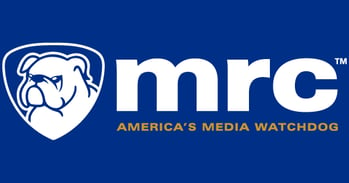
The Media Research Center (MRC) is a Conservative media watchdog group on a mission to neutralize media bias. Formed in 1987, the organization monitors dozens of hours of news every single day across 10-12 channels. In this blog, we will take a brief look at how SnapStream helped the MRC reimagine its archiving and workflows, make the transition to digital, and finally say goodbye to the VCR.
The Challenges
The MRC started as a monthly newsletter reporting on liberal media bias. To create the the newsletter, MRC staff recorded hours of TV news on videotapes - remember those? - and watched the broadcasts to provide analysis and a more balanced view. This process eventually gave way to video cards and DVDs, but still left the MRC with the challenge of effectively managing and storing archived footage.
The old process also meant that each show or segment could only be watched by one staffer at a time. Collaboration was a challenge and the only way to access recorded footage was to be on site. It simply became too much to manage.
The Solution
The MRC initially implemented SnapStream's news and media video workspace for its ability to be a "super-sized DVR system" and remove the need for a physical archive. As the MRC transitioned from a paper newsletter to a blog, Twitter, and Facebook as its primary channels, SnapStream became an even more valuable asset for the team. MRC users routinely fill their Twitter feed with commentary about key moments as they are happening.
"Virtually all of our blog posts include video. And we're able to live tweet questions and answers from White House press conferences."
-Brent Baker, Vice President
Media Research Center
Using SnapStream, the MRC team has been able to deepen its bench of those monitoring and analyzing the news because multiple people can watch the same content at the same time. And, because the platform is so easy to use, the MRC even gets its interns onto the system to start monitoring media and pulling clips right out of the gate.
Control and flexibility also increased for the MRC through its use of SnapStream. The MRC's deep archive is now easily searchable and can be accessed by its team members from any location.
The Result
With SnapStream, the Media Research Center is able to more quickly and effectively fulfill its mission of neutralizing media bias. The team is able to analyze and provide commentary on coverage of pivotal events such as The State of the Union or political primaries within minutes.
The MRC has also been able to broaden its programs to monitor more types of news and video content and provide comprehensive analysis. The watchdog now has eight specific programs, more than 217,000 Twitter followers, and nearly 1.8 million followers on Facebook. Through all of its channels, the MRC generated an average of 449.6 million impressions each week last year.
"SnapStream is critical [to our workflow]. It's become the backbone of our ability to record all the video we need and have it organized and structured, whether we're looking for it a minute later, a day later, or a year later."
-Brent Baker, Vice President
Media Research Center
In Their Own Words
Want to hear the full story? Hear the MRC's Brent Baker in his own words by checking out the video below.
ABOUT THE MEDIA RESEARCH CENTER
The MRC’s commitment to neutralizing leftist bias in the news media and popular culture has had a critical impact on the way Americans view the liberal media. The MRC is able to effectively educate the public about left-wing media bias by integrating cutting-edge news monitoring capabilities with a sophisticated marketing operation.
The Media Research Center is a research and education organization operating under Section 501(c)(3) of the Internal Revenue Code. Contributions are tax-deductible to the maximum extent of the law. The MRC receives no government grants or contracts nor does it have an endowment. The MRC raises its funds each year from individuals, foundations, and corporations.
Interested in more info about media bias?
Check out our article on how source bias impacts online media engagement and answer the question - was Marshall McLuhan right? Is the medium really the message?
